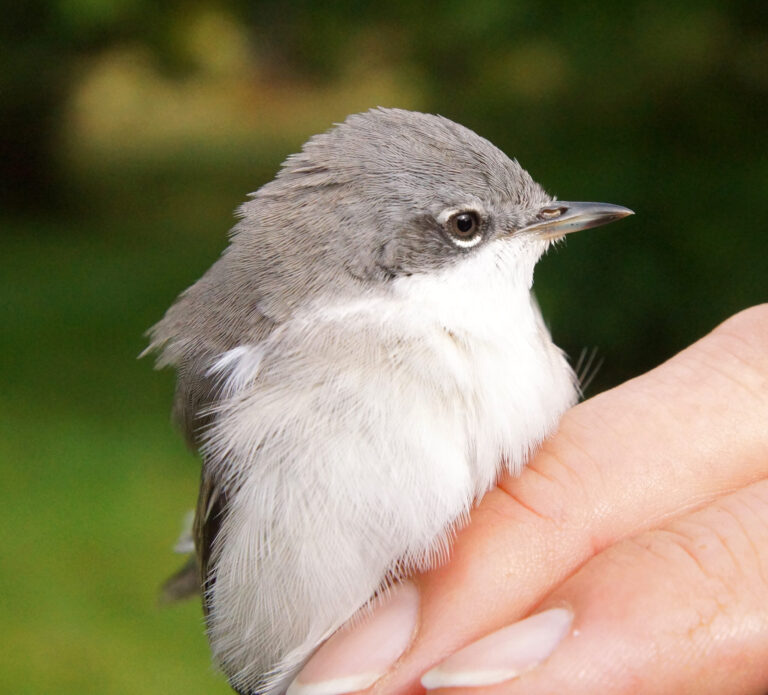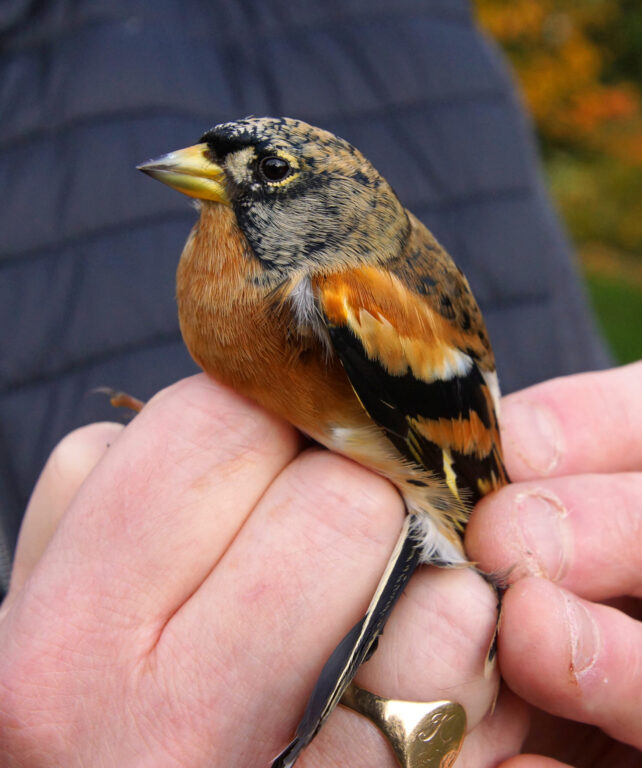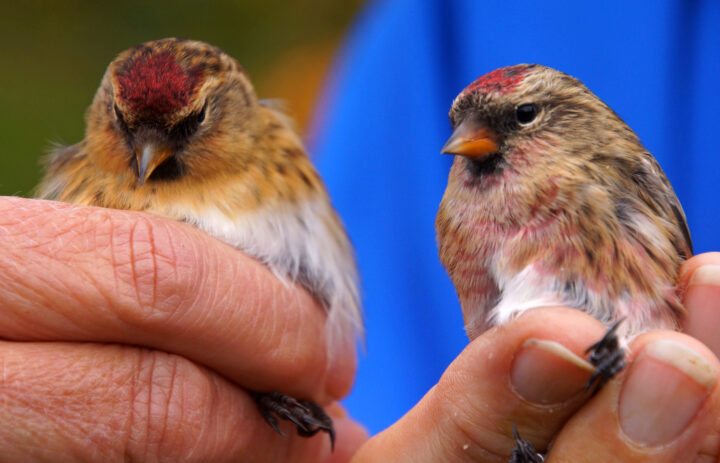News of several travelling birds came from the BTO this month: saddest was probably that of a young Kestrel ringed near Lowick in June which was found dead on Cheswick Sands on the 3rd September. A 2017 ringed owlet from Alnmouth was also found dead near Foxton in August this year. On the other hand a Mute Swan ringed as a cygnet at Lee Moor Farm, Alnwick in 2018 is apparently currently living happily on the lake at Woodhorn, nr Ashington. The mad weather we have been having lately has also moved around a number of birds which are usually noted more for being sedentary including: A Dunnock ringed on the 27/9/20 at Low Newton, which we controlled at Howick on the 2nd and 18th (clearly it has taken up residence); a Coal Tit also ringed at Low Newton on the 4/10/20 which was at Howick on the 6th; and a Blue Tit which was ringed at Hauxley on the 10/9/20 which we have controlled no-less than three times at Howick. More interesting is perhaps the Great Tit which we ringed at Howick on the 31/7/20 which was controlled by another ringer near Dunbar, Scotland on the 1st October.

Ringing at Howick during October has continued to be a battle against the weather; although every session we have been able to conduct has been punctuated by the pleasure of 100’s of Pink-footed geese migrating over-head and on a couple of occasions by Ravens annoying the local Buzzards. Starting on the 2/10/20 we captured 74 birds (27 retraps & 47 new) including four new Mistle Thrushes; a beautiful young (probably female) Kestrel (see pict.); a Blackcap, two Chiffchaff, and a Lesser Whitethroat (see pict.). These latter three species are of course all migrating south but while the first two will probably not make it any further than The Gambia the story for the Lesser Whitethroat might be much more interesting. They generally fly ‘eastwards’ (rather than directly south) to cross the Mediterranean around Italy or Greece; heading down through Egypt to find wintering grounds in Sudan, Chad, Eritrea and Ethiopia!
Back again on the 6/10/20 we captured 83 birds (12 retraps & 71 new) with the first bird of the day being a magnificent male Brambling (see pict.); these large chaffinch relatives having just arrived in from Fennoscandinavia. Unfortunately, they don’t seem to stay around our ringing station probably due to the lack of Beechmast. Other species also coming in from the sea included Blackbirds, Song Thrush, Redwing and Goldcrest. We also ringed a new young Great Spotted Woodpecker and a party of Long Tailed Tits. Still migrating south were two Chiffchaff but no Blackcaps on this occasion. We also captured an entirely new species for this site, 11 Redpoll (see pict.). Some of my fellow birders will insist on asking what specific species ‘Lesser’ or ‘Mealy’ but since modern genetics has determined that they are basically the same species I refuse to spend time on this semantic debate.
Things were quieter on the 8/10/20 with only 44 birds captured (14 retraps & 30 new) but they did include both Chiffchaff and Blackcap; and three each of Redpoll and Bullfinch. Similarly, on the 16th we captured 49 birds (18 retraps & 31 new) including a Nuthatch retrap originally ringed back on the 27/9/10 and a Great Tit from 7/10/16. There was a new Blackcap, Bullfinch and Goldcrest.

Starting rather late on the 18/10/20 we did not finish until 15:00 hrs. in the afternoon; after catching 103 birds (22 retraps & 81 new). The re-traps included a Goldfinch first ringed as an adult in October 2016. There were several new Blackcaps and a Chiffchaff, all carrying good fat reserves clearly planning to migrate much further south; Redwing and Blackbirds with little fat, suggesting they had just arrived across the North Sea; only one Redpoll (presumably having become separated from its foraging flock); and quite a lot of Great Tits and Coal Tits obviously having started to form up into winter flocks. Rain and wind prevented any further ringing until the 30/10/20, when after another late start we managed to capture 50 birds (16 retraps & 34 new). The new birds included 4 Blackcaps all clearly on migration south (having called in at Howick to re-fuel) carrying significant amounts of fat; and a number of Goldcrest and ‘continental looking’ Blackbirds.
Whether we will be able to do any more ringing at Howick this autumn will depend on the weather and its effect on both birds and ringers!
Best Regards,
Phil Hanmer
S Ringer/Trainer; Natural History Society of Northumbria Ringing Group (Hancock Museum)
E-mail: tytoalbas@btinternet.com
